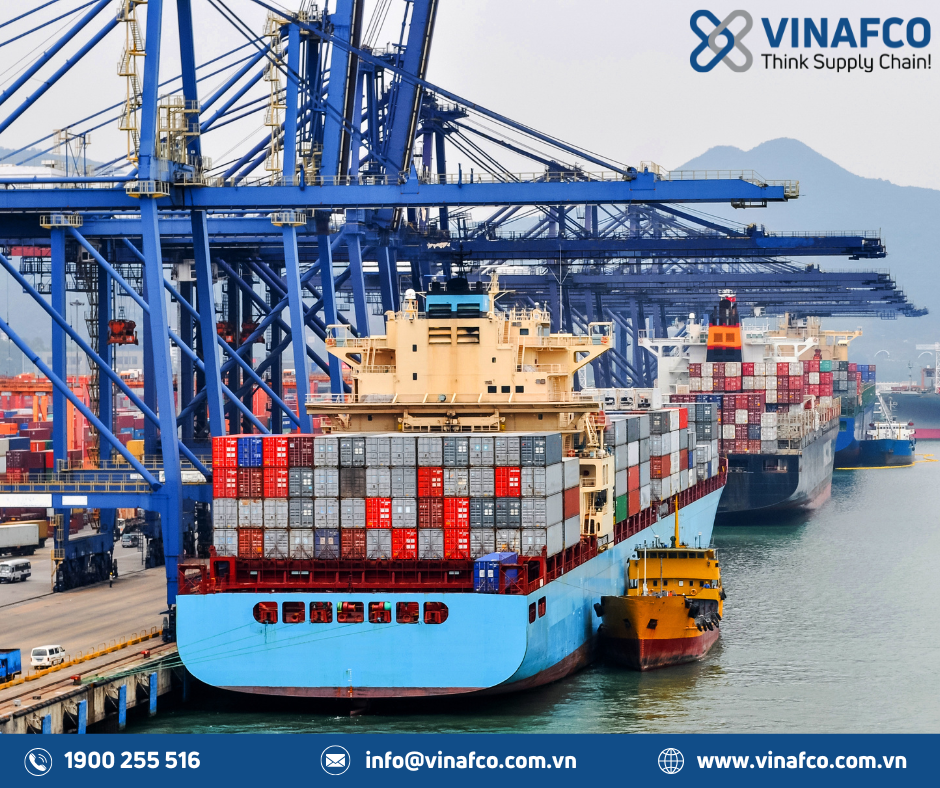Sea freight plays a pivotal role in global trade, particularly in the field of international logistics. This article will delve into the sea freight process, analyze its advantages and disadvantages, and identify suitable types of goods.
Sea Freight Process:
- Request Receipt: The customer contacts a sea freight forwarding unit to request services.
- Quotation and Consultation: The forwarding unit provides consultation on routes, schedules, costs, and necessary procedures.
- Booking and Document Preparation: After agreement, the forwarding unit books space on the vessel and prepares documents such as bills of lading, invoices, packing lists, etc.
- Packaging and Transport to Port: Goods are packaged according to standards and transported to the port of departure.
- Customs Clearance: The forwarding unit handles customs clearance for export goods.
- Loading onto the Vessel: Goods are loaded onto the vessel according to the plan.
- Sea Freight: The vessel transports goods to the destination port.
- Customs Clearance at Destination Port: The forwarding unit handles customs clearance for import goods.
- Unloading and Transport to Warehouse: Goods are unloaded and transported to the recipient's warehouse.
- Delivery: Goods are delivered to the recipient.
Advantages of Sea Freight:
- Low Cost: Compared to air freight, sea freight costs are significantly lower, especially for large volumes of goods.
- Large Cargo Capacity: Ships can carry massive volumes of goods, including oversized and overweight cargo.
- Flexibility: Sea freight can transport a wide variety of goods, from dry and liquid cargo to refrigerated goods.
- Extensive Coverage: The sea freight network covers the globe, connecting most countries and regions.
Disadvantages of Sea Freight:
- Long Transit Time: Compared to air freight, sea freight transit time is much longer, potentially taking weeks or months.
- Weather Dependency: Bad weather can affect vessel schedules and safety.
- Risk of Loss or Damage: Goods can be damaged by impact, moisture, or lost due to theft.
- Complex Procedures: Customs and other sea freight procedures are quite complex, requiring expertise and experience.
Suitable Types of Goods:
- Large volume goods: such as coal, ore, grain, cement, etc.
- Large size goods: such as machinery, industrial equipment, automobiles, containers, etc.
- Low value goods: such as consumer goods, garments, etc.
- Goods with non-urgent delivery requirements: such as inventory, seasonal goods, etc.
Freight forwarding by sea is an important part of the international logistics supply chain. Choosing a reputable and professional sea freight forwarding unit will help businesses optimize costs, ensure cargo safety, and improve business efficiency.
With a professional team of staff with nearly 20 years of experience in the field of Freight Forwarding, understanding foreign trade and types of Import and Export, Vinafco will accompany businesses to carry out freight forwarding by sea.
Mr. Kris – Managing Director of Vinafco Logistics Company Limited
Phone: 0904 233 755
Email: cuong.phamkien@vinafco.com.vn

 News
News





